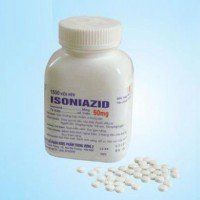This is an automatically translated article.
Hand, foot and mouth disease is a common infectious disease caused by different viruses. The course of hand, foot and mouth disease is usually not serious and most cases clear up in 7 to 10 days without treatment. However, there are some dangerous complications of the disease that need timely detection, such as viral meningitis, which can lead to death.1. What causes hand, foot and mouth disease?
The viruses that most commonly cause hand, foot and mouth disease are oxsackievirus a16 and enterovirus 71. In fact, you may have heard your doctor call it coxsackie virus.
The virus that causes hand, foot and mouth disease can be found in an infected person at:
Nasopharyngeal secretions (such as saliva, sputum, or nasal mucus). Fluid from the blisters. Feces. Hand, foot and mouth transmission by which way?
Close personal contact, such as hugging the sick person. Inhale air when an infected person coughs or sneezes. Contact with feces, such as changing diapers of an infected child, then touching eyes, nose, or mouth before washing hands. Contact with contaminated objects and surfaces, such as touching a doorknob with the virus, and then touching your eyes, mouth, or nose before washing your hands. Swallowing water in a swimming pool contaminated with the virus. However, this route of transmission is not very common and occurs only in cases where the water has not been properly treated with chlorine and is contaminated with feces from a person with HFMD. Usually, people with hand, foot and mouth disease are most contagious during the first week of illness, but sometimes people who have recovered from the disease can still transmit the disease several weeks after symptoms disappear. It is possible for adults to be infected and not develop any symptoms, but they can still pass the virus on to others. This is why people should always strive to maintain good hygiene, such as washing their hands frequently, so they can reduce their chances of spreading or catching an infection.
Hand, foot and mouth disease is not transmitted to pets or from pets or other animals.
2. Symptoms of hand, foot and mouth disease

Sốt là một trong những biểu hiện của bệnh tay chân miệng
Hand, foot and mouth disease can have all of the following signs and symptoms or just some of them, including:
Fever. Sore throat. Feeling unwell. Painful, red, blistering lesions on the tongue, gums, and inside of the cheeks. A red, non-itchy rash with occasional blisters on the palms, soles, and sometimes buttocks. Babies and toddlers are irritable. Eat delicious. The incubation period for HFMD from infection with HFMD to the onset of signs and symptoms is three to six days. Fever is often the first sign of HFMD, followed by a sore throat and sometimes poor appetite and malaise.
A day or two after the fever starts, painful sores may appear on the front of the mouth or throat. A rash on the hands and feet and possibly the buttocks can occur within a day or two.
Sores that develop in the mouth and throat may suggest that your child has a viral infection called herpangina. Distinctive features of herpangina include a sudden high fever and, in some cases, convulsions, and, very rarely, sores that develop on the hands, feet, or other parts of the body.
Hand, foot and mouth disease is usually a mild illness that causes only a few days of fever and relatively mild signs and symptoms. Contact your doctor if mouth sores or sore throat keep your child from drinking fluids, or after a few days, your child's signs and symptoms get worse.
3. Subjects at risk of hand, foot and mouth disease

Bệnh tay chân miệng chủ yếu ảnh hưởng đến trẻ dưới 10 tuổi, thường là những trẻ dưới 5 tuổi
Hand, foot and mouth disease mainly affects children under 10 years old, usually those under 5 years old. Children in childcare centers are particularly susceptible to outbreaks of hand, foot and mouth disease because the infection is spread through contact with other young children, who are the most susceptible.
4. Hand, foot and mouth disease prevention
Some hand, foot and mouth disease prevention measures that can help reduce the risk of infection include:
Wash your hands carefully. Wash your hands often and thoroughly, especially after using the bathroom or changing diapers and before preparing food and eating. When soap and clean water aren't available, use alcohol-based hand wipes or gels to kill germs. Disinfect common areas. Get in the habit of cleaning high-traffic areas and surfaces in the household first with soap and water, then using a diluted solution of chlorine bleach and water. Child care centers should follow a strict schedule of cleaning and disinfecting all common areas, including shared items such as toys, as viruses can live on these objects for days. . Clean your baby's pacifier regularly. Teach children good personal hygiene. Show your child how to practice good hygiene and how to keep it clean. Explain to your child why fingers, hands, or any other object should not be put in their mouths. Because hand, foot and mouth disease is highly contagious, people with the disease should limit contact with others when they have typical signs and symptoms. Keep sick children out of school until the fever is gone and the mouth sores have healed. If adults are sick, work from home.
Please dial HOTLINE for more information or register for an appointment HERE. Download MyVinmec app to make appointments faster and to manage your bookings easily.
References: Cdc.gov and Mayoclinic.gov












